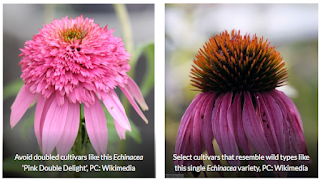Results from the Great Tomato Ripening Experiment! It’s almost mid-January and I’m still enjoying tomatoes from
the plants I grew this past summer. I just gathered a handful and made some
tasty, fresh salsa to complement the vegan tacos I made for our dinner. So how is
it that I’m still reaping the benefits of my garden? In late October/early
November, I embarked on Grety’s Great Tomato Ripening Experiment.
 I asked all my friends on social media, “How do you extend
the life of your (green) tomatoes?” For as many pounds as I still had on the
vine, I got responses. The techniques were varied and came with a lot of
guarantees. So, I put each method to the test. Most of the ideas required me
using high-dollar real estate in the garage. I managed to claim a few square
feet for the experiment.
I asked all my friends on social media, “How do you extend
the life of your (green) tomatoes?” For as many pounds as I still had on the
vine, I got responses. The techniques were varied and came with a lot of
guarantees. So, I put each method to the test. Most of the ideas required me
using high-dollar real estate in the garage. I managed to claim a few square
feet for the experiment.
The majority of green tomatoes came from my prolific, San
Marzano plant but any tomato will work. I placed some in a plain,
brown paper bag. Several friends swore by this method.
Other friends told me, I should add a piece of fruit like a
banana or an apple, into the bag. The theory is that the fruit releases
ethylene, a chemical that will help green tomatoes ripen. So, I did one of
each. I placed tomatoes in a single layer on paper.



I stacked them in several layers with heavy paper separating
the produce.

I placed them along my windowsill near the kitchen.
 Lastly, I even took whole vines and hung them upside down
from bicycles in the garage.
Lastly, I even took whole vines and hung them upside down
from bicycles in the garage.
By this time, my husband thought I’d lost it.
With each method, I tried to leave on some of the stem of
the tomato and I situated the San Manzanos so they didn’t touch one another. In
an effort to not attract fruit flies, I washed each tomato before I placed them
on the windowsill. I didn’t have any fruit fly problems.

In the end, the very best method was actually a combination
of a few. The windowsill tomatoes ripened quickly. They still tasted
garden-fresh and we used them in salads and such.
The next two methods that have worked for me are the single
layer and the stacking of single layers. It takes up more space than I would
like, but my family has feasted on tomatoes, non-stop.
None of the bag methods really worked for me—nor did hanging
the vines from the bikes. Those tomatoes dried up before they were finally
ripened. I should add, that the tomatoes I’m using in January aren’t as
flavorful as the ones that ripened in November. But, I’ll guarantee you they
are better than the plum or Roma tomatoes available at local markets. They are
delicious in salsas or pan roasted for sauces and soups.
I’m sure tomato variety and garage temperature play a large
role in success rates of ripening green tomatoes. But, I’ve concluded that I
won’t let any more produce wither on the vine. From now on, every year when
October rolls around, I’ll be clearing a spot in the garage to continue reaping
the benefits of my summer’s labors.



.png)








.png)


































